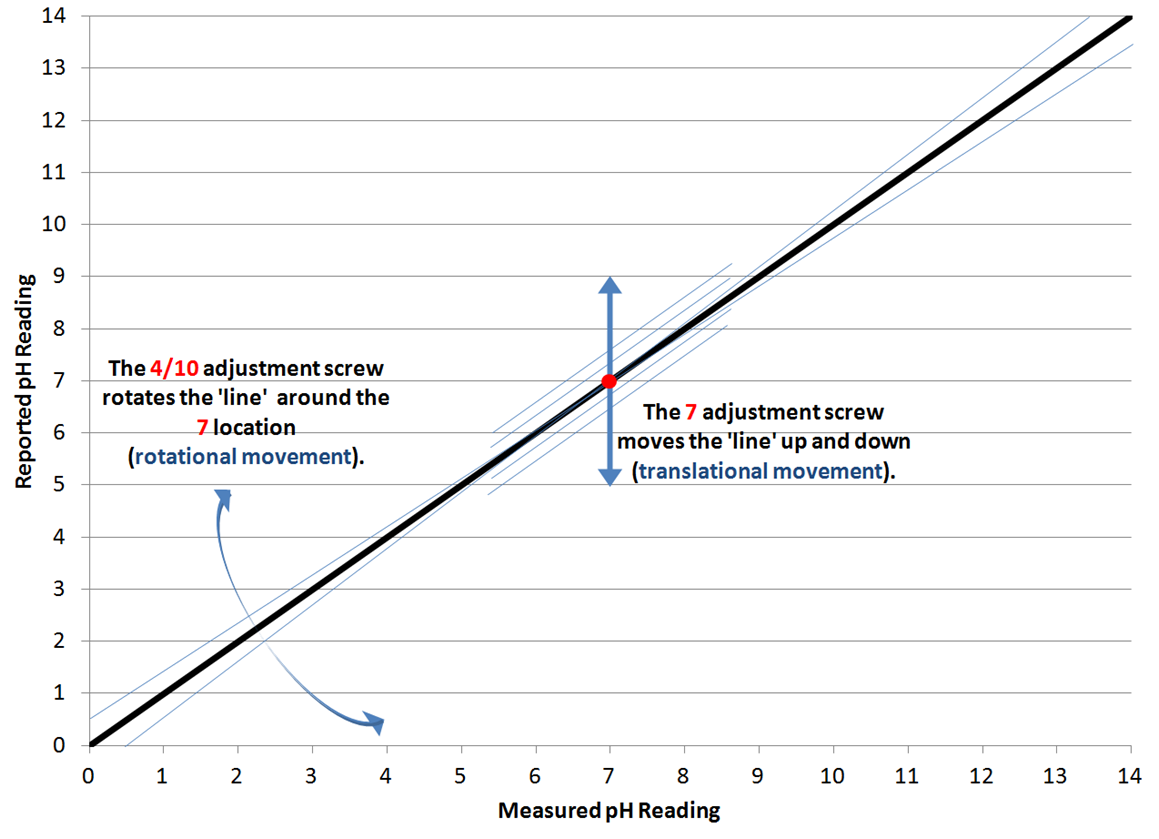pH Meter Adjustments - What is Going On?
On most moderately-priced pH meters, there are a pair of adjustment screws (typically labeled 7 and 4/10) that are used to calibrate the pH reading that the meter reports. This is a brief explanation of what those screws are doing.
In the figure below is a plot of the measured pH reading versus the reported pH. What those adjustment screws allow the user to do, is alter the reported values to more closely agree with the pH of the measured solution. For meter calibration, we use a pair of solutions with 'known' pH's to adjust the meter's output to match the pH of those known solutions. You either use the 4 and 7 solutions or the 7 and 10 solutions. Since brewing typically observes pH's in the lower range, the 4 and 7 solutions are recommended for calibration in the brewery.
In most cases, you start with the pH 7 solution and use the adjustment screw to move the 'line' in the figure below - up or down so that it reports 7.0. This is a 'translational' movement of the meter response. After the 7 reading has been set, we move to the 4 calibration. When we use the 4/10 adjustment, it is adjusting the slope of the line by 'rotating' the line about the 7 point.
After adjusting the 4/10 screw, it is wise to revisit the 7 calibration solution reading to make sure any adjustment of the 4/10 screw didn't alter the 7 reading. As usual, always rinse your pH probe with distilled water and either blow off or gently dab the probe to remove excess moisture before moving from solution to solution.
Enjoy!
